I am often asked, how do you taste wine like a pro? Living in Wine Country, I must say I have heard many an opinion on this subject.
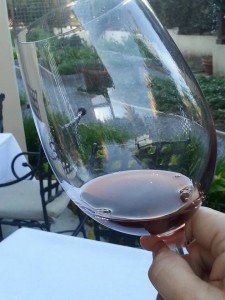 Follow my wine tasting notes below but remember to schedule a visit to the right winery as well and do research prior to your visit. Some people, myself included, enjoy tasting wine in the privacy of the home. This allows one to focus completely, away from distractions and smells that a winery can present.
Follow my wine tasting notes below but remember to schedule a visit to the right winery as well and do research prior to your visit. Some people, myself included, enjoy tasting wine in the privacy of the home. This allows one to focus completely, away from distractions and smells that a winery can present.
If you schedule a time to visit and the winery is holding a large event, it is harder to get the one on one attention from the hospitality representative. Noise, odor and other factors also will play a role in a tasting. When one is trying to focus on the smells and tastes of their own glass, it can be difficult in a large crowd. On the other hand, perhaps you thrive in this lively atmosphere and it works perfectly. Plan the trip to the winery according to your own needs and read up on the tasting room beforehand.
When it comes to the pour, optimum plan is to pour the glass to one third full, leaving room for the swirl.
1st Step: Sight Evaluation
First look straight down into the glass of wine. Next hold the glass up to a light source giving the glass a tilt in the process to allow the wine to roll toward the edge of the glass. This will help you to see the unique color of the wine. When looking straight into the glass you can see a dark center and cannot get a full grip of it’s color. Through the side of a wine glass, you can tell how clear or murky a wine may be. You can also ascertain if there is any sediment.
2nd Step: The Swirl
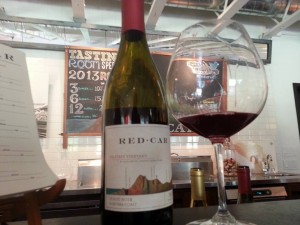 Finally, it is time to give your glass a swirl or two or three. For the novice, it is recommended to keep the glass on a flat surface to swirl. After the swirl, look again at the glass from the side view and notice the “legs” forming on the sides and running down to join the rest of the wine.
Finally, it is time to give your glass a swirl or two or three. For the novice, it is recommended to keep the glass on a flat surface to swirl. After the swirl, look again at the glass from the side view and notice the “legs” forming on the sides and running down to join the rest of the wine.
When someone says a wine has “good legs” it says absolutely nothing about the wine quality itself. Legs on wine are an indicator of alcohol and glycerin content which tells you generally that these wines are riper, more mouth-filling and dense than those that do not have legs as thick. Also, us humans love a good “leg” joke.
3rd Step: Nose Evaluation
I’ve heard many great Sommeliers tell me that tasting wine is 85% about training your olfactory senses. The nose is where it’s at. Once you have given the wine a swirl, it is time to have a good smell. Let your nose hover just over the rim of the wine glass like a spider waiting for it’s prey. You want to take a few short sniffs of the nose and pull away for a moment to let your brain process the information you have just taken in. This gives a wine taster time to filter the info as well.
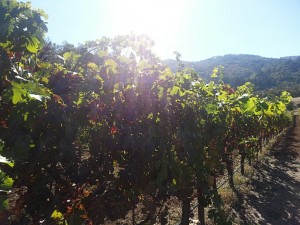 Potentially, there are thousands of different aroma components that can be in a wine. For the beginning wine taster, do not look to try to identify them all or even most. Naming any fruits, herbs or flowers that you detect with your tasting partners can be a fun thing to try. There are many guides that will help walk you through the steps of how to train your nose to identify key aromas that are often present in certain wines. Most wine educators I have spoken with recommend driving to your local grocery store and smelling the produce aisle, the garden center, etc. Smell everything. Train your nose. DO you know the difference between the smell of the skin of the kiwi as opposed to the insides?
Potentially, there are thousands of different aroma components that can be in a wine. For the beginning wine taster, do not look to try to identify them all or even most. Naming any fruits, herbs or flowers that you detect with your tasting partners can be a fun thing to try. There are many guides that will help walk you through the steps of how to train your nose to identify key aromas that are often present in certain wines. Most wine educators I have spoken with recommend driving to your local grocery store and smelling the produce aisle, the garden center, etc. Smell everything. Train your nose. DO you know the difference between the smell of the skin of the kiwi as opposed to the insides?
Figuring out which notes you like is key to learning how to choose wines you like on your own.
4th Step: Name That Smell
Berries, Herbs, Flowers….Oh My! There are some many categories of smells when it comes to tasting wine and then there is always the anomaly when it comes to smell like “fresh cut garden hose.”
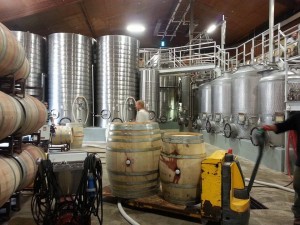 The garden hose “note” was a favorite of mine from the film Somm about earning the title of Master Sommelier from the Court of Masters. Each person’s nose smells differently and there are thousands of smells out there to detect. Start with the fruit smells. If there are no obvious aromas, try to see what fruit aromas you detect. Grapes are used to make wine so unless it is very old or cold, you should detect fruit fragrances.
The garden hose “note” was a favorite of mine from the film Somm about earning the title of Master Sommelier from the Court of Masters. Each person’s nose smells differently and there are thousands of smells out there to detect. Start with the fruit smells. If there are no obvious aromas, try to see what fruit aromas you detect. Grapes are used to make wine so unless it is very old or cold, you should detect fruit fragrances.
Floral aromas are another thing to look for in those first moments. White wines like Riesling and Gewurztraminer have stronger floral aromas and are easy to smell in the first sniff.
Some wines have a more herbal or grassy type floral scent. When learning to sniff your wine it is important to also remember that terroir indications can play a big part in the taste. One other common indicator for wine is an earthy characterization. The particular conditions of the vineyard soil and climate are expressed as specific scents and flavors in the final product.
Don’t forget that the juice has been hanging out in fermentation tanks and barrels for quite some time, also playing a role in the notes your nose can detect in the finished wine. Taste any Oak?
5th Step: Taste Evaluation
Can you believe it…we actually get to taste the wine now… Wowsers. Tilt your glass and take a sip, not a swallow, a sip.
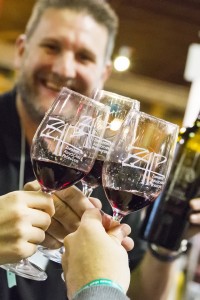 Swirl it around, move your tongue around in circles, act as though you are sucking the wine through a straw as you swallow. Ignore any stares from the beginners. A true wine aficionado knows exactly what you are doing. What all this swirling in the mouth accomplishes is to aerate the wine and circulate it through your entire mouth. How are you going to know the “mouthfeel” if you simply swallowed?
Swirl it around, move your tongue around in circles, act as though you are sucking the wine through a straw as you swallow. Ignore any stares from the beginners. A true wine aficionado knows exactly what you are doing. What all this swirling in the mouth accomplishes is to aerate the wine and circulate it through your entire mouth. How are you going to know the “mouthfeel” if you simply swallowed?
Just like when smelling the wine, you will start to detect the same flavor notes in the glass. Flowers, fruit, earth, barrel and herbs may come to you at once. You are not simply using your taste buds to identify the flavors, you are also considering the complexities of the wine and whether it seems complete.
Similar to tasting a soup at the end of a recipe to see if it needs salt, you want to try and see if you think the wine is balanced and finished or if it could use more time or perhaps even differing barrel, vineyard or fermenting techniques.
Also similar to a good meal, a good wine should have all of its flavor components working harmoniously. Our taste buds detect the sweet, salty or bitter and want these to be in the right proportions. Often in a younger wine, some flavors will stick out easily. This is not desired. In a perfectly aged wine, the flavors have already come together and present their flavors harmoniously blended together.
Play the same game with your group that we tried with the nose evaluation. Try to name the various flavors that you are each getting in the sip you just took. A complex and evolved wine will have a lingering finish that is satisfying long after the sip. These wines are the ones that deserve that extra attention and hopefully purchase to take home and enjoy later. Just like a good meal, you want the experience of a good bottle to stay with you long after.
In Short…
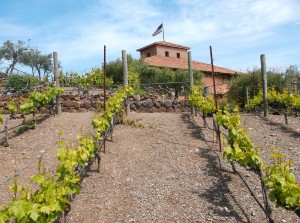 One of the main things to remember, is to have fun while wine tasting. Also remember that the hospitality staff at any winery is there to provide you with an enjoyable and learning experience. These wine experts see all types of wine lovers from the novice to the sommelier to the snob. They are there to help you learn more about their wines and you are there to enjoy yourself. If you remember these two things, you should have a wonderful tasting trip. And also keep in mind, practice makes perfect and keep on sipping.
One of the main things to remember, is to have fun while wine tasting. Also remember that the hospitality staff at any winery is there to provide you with an enjoyable and learning experience. These wine experts see all types of wine lovers from the novice to the sommelier to the snob. They are there to help you learn more about their wines and you are there to enjoy yourself. If you remember these two things, you should have a wonderful tasting trip. And also keep in mind, practice makes perfect and keep on sipping.
Chin Chin
This is very useful. I hope we may make a few copies for our Wine tasting guests here at our fruit winery in Malawi? Keep up the good work
Margaret
Glad that you find the guide so helpful. Print up copies and share around, let us know if you have any questions and make it a wonderful week. Cheers
This is something I should have read when I had my first sip of wine. I really appreciated the educational & conversational tone as opposed to the wine snob talking down to a novice (bookmarked this to my favs). Thank you for writing this!
Chin Chin